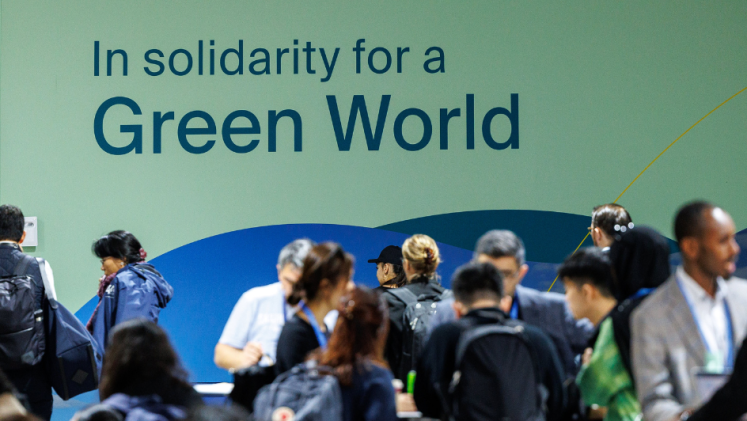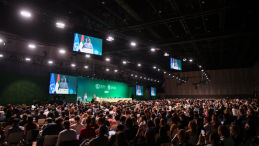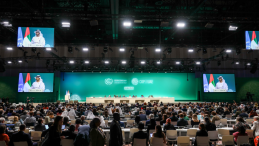Climate conference COP29 puts spotlight on adaptation and adaptation finance
At the climate summit held in the UAE late last year, a sobering stocktake showed that human-induced climate change is already affecting every region worldwide with the most vulnerable facing the brunt of its impacts. At the same time, climate adaptation efforts are fragmented and uneven, leaving substantial adaptation gaps that will widen under current business as usual implementation levels. Fast forward to the ongoing climate conference COP29 in Baku, country delegates have the chance to address these issues.
Addressing the adaptation finance gap
Finance is the hottest debated topic at COP29. For adaptation, the debate is on closing the adaptation finance gap by meeting earlier commitments and making new ones. The adaptation finance gap is significant, with estimated adaptation costs in developing countries reaching as high as $387 billion annually throughout this decade. Until now, adaptation has been overshadowed by mitigation in climate finance negotiations, despite earlier resolutions to balance mitigation and adaptation finance.
Developing the New Collective Quantified Goal on Climate Finance (NCQG) in this context requires signposting and mainstreaming adaptation throughout its framework. A maximist approach, such as articulating a specific goal on quantitative finance provisions for adaptation, might ultimately be politically infeasible. However, anchoring adaptation (and possibly elements related to loss and damage) in an increased mobilization goal for climate finance and integrating it as qualitative elements in guidance to other public and private finance sources for climate action, as well as addressing barriers to investments in adaptation, could form a substantive outcome in Baku. Additionally, COP29 could and should result in new pledges to adaptation-related funding institutions such as the Adaptation Fund.
Operationalizing the Global Goal on Adaptation (GGA); making National Adaptation Plans actionable
The Paris Agreement established the Global Goal on Adaptation (GGA) with the aim to enhance adaptive capacity, strengthen resilience and reduce vulnerability to climate change, with a view to contributing to sustainable development and ensuring an adequate adaptation response in the context of the temperature goal. COP28 saw the adoption of the UAE Framework for Global Climate Resilience, which provides a foundation for the Global Goal on Adaptation. This framework includes seven thematic targets covering crucial sectors like water, food, health and ecosystems, along with four targets related to the adaptation process. COP29 will aim to guide the UAE – Belém work programme on indicators, which is set to conclude at COP30. At COP29, countries could decide that the GGA should incorporate adaptation-related elements from the NCQG, especially if these elements are connected to clear goals that help measure progress and ensure accountability in delivering adaptation. Parties will also have the opportunity to consider transformational adaptation, a relatively new topic that can support achieving the Global Goal on Adaptation. Transformational adaptation involves adaptation actions that change the fundamental attributes of a system in anticipation of the climate crisis, including altering societal goals or values and addressing the root causes of vulnerability.
In regard to National Adaptation Plans (NAPs), COP29 needs to discuss support for their development, review, and implementation. Last year, it was affirmed that countries should have a national adaptation policy instrument, such as a National Adaptation Plan, in place by 2025 and implement it latest by the end of the decade. While more countries are submitting their NAPs, real challenges exist in implementing the respective activities and facilitating necessary investments. COP29 can address these challenges by streamlining procedures to secure relevant funding (including from the Green Climate Fund) and suggesting further guidance on NAP investments and sectoral implementation.
Adaptation at COP29: Talk the talk but walk it also!
Considerable political attention and capital are being spent on adaptation, including adaptation finance, at COP29. For example, the COP29 Presidency assigned a minister pairing to the issue in October. Several high-level events [e.g. 1 and 2], including with ministers and heads of state, are being conducted as part of the conference. While it is important that these high-level consultations and convenings translate into momentum towards forging an ambitious text for adaptation at COP29, it is equally important to use this attention to highlight innovation in enhancing adaptation and adaptation finance.
Innovations might include integrating adaptation within the broader context of climate action, sustainable development and biodiversity strategies by pledging to scale up investments in nature-based solutions. Another area is innovative funding mechanisms alongside traditional donor contributions. For example, banks can de-risk and incentivize public and private sector investment in adaptation projects. Other mechanisms include debt-for-adaptation swaps and divestment from activities that add to climate risks.
Putting the spotlight on adaptation finance at COP29 could help move adaptation beyond ‘business as usual’. For the future, discussions on transformational adaptation can mark a shift towards addressing the root causes of vulnerability to climate change. It could become the context under which to deliver long-term climate resilience.





